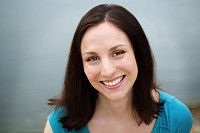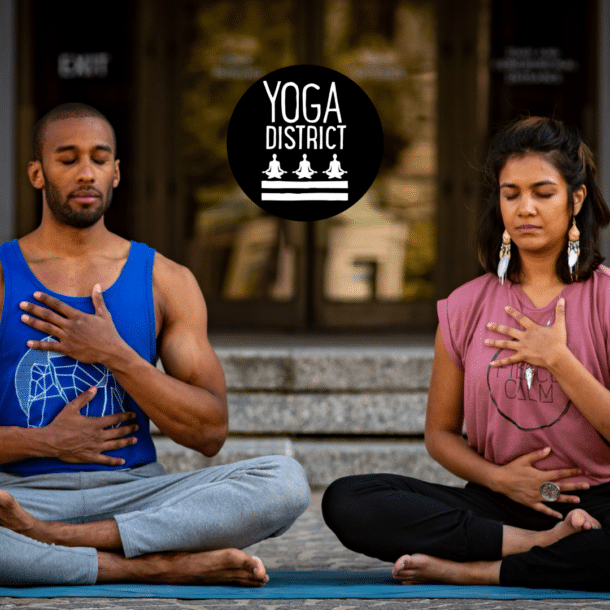 I came to yoga because I wanted a hot body. I signed up for my first class for the same reason that I occasionally did laps at the pool or a half-hearted twenty minutes on the elliptical: “Maybe this will give me hard thighs.”
I came to yoga because I wanted a hot body. I signed up for my first class for the same reason that I occasionally did laps at the pool or a half-hearted twenty minutes on the elliptical: “Maybe this will give me hard thighs.”
I don’t know about hard thighs, but I do remember the yoga was hard. I remember the teacher trying unsuccessfully to lengthen my spine in down dog before giving me a reassuring pat and saying in her charming Wisconsin accent, “We’ll getcha there with time.” I remember I thought crow pose was the most ridiculous thing I could imagine a human body doing—and “imagine” is the key word here, because there was no way my feet were leaving the floor. And I remember, too, that the first time I did matsyendrasana, a simple seated twist, I felt like I was arriving home.
I write this without hyperbole: it was my first yoga class; most of the experience was painful and awkward and confusing; and somehow around or beneath all of that, some part of me recognized the practice and said, “You’ll do this for the rest of your life.”
Of course, change doesn’t happen in a single flash as we twist sublimely into matsyendrasana. I did continue to do yoga consistently, but I was broke and busy, and so for many years, my only teacher was Rodney Yee on DVD. And my primary motivation continued to be having a hot body, so here and there I cheated on yoga with Pilates, spinning, and even a regrettable tryst with P90X. I didn’t think much about that first matsyendrasana; mostly I thought about what I looked like, and what I could do to look better. But here’s the thing: studies of human motivation tell us that future gains like improved health and fitness have a very tenuous influence on what we do here and now, particularly if what we have to do here and now to get those future gains is something we perceive as unpleasant, like exercise. So, pretty quickly, the other forms of exercise I was doing would fall by the wayside, traded in for the next fad.
But yoga didn’t. If you had asked me why I was able to stay consistent with yoga and not anything else, I would have said, “I dunno, I like how it feels.” I might have heard of the Bhagavad Gita, but I didn’t think it had much to do with sweating through a vinyasa. I might have felt a little less harried and a little more centered, but I’m not sure that I consciously went to the mat to achieve peace. It wasn’t until I came to Yoga District five years after that first yoga class that it first hit me: there’s something more to this.
I took Jasmine’s midnight New Year’s Eve class, a sweaty ninety-minute flow followed by a long yoga nidra, a deep relaxation process that I had never done—or even heard of—before. At that time, I’d never met Jasmine; I happened into the class because it was across the street from the New Year’s Eve party I planned to go to. I didn’t know that Yoga District was collectively run or that it had a non-profit outreach arm, Yoga Activist, or even that yoga outreach is profoundly beneficial for communities that experience chronic stress or hardship. But by the end of that class, that same matsyendrasana feeling had returned: “This is home.” I asked Jasmine as we rolled up our mats and put on our shoes if teaching yoga was her career; she said yes. And I said, “I want your life.”
That was three years ago. A year after I met Jasmine, I did Yoga District’s 200-hour teacher training, where I finally gained an intellectual understanding of what my body had known for years. Yoga is more than exercise. Yes, it strengthens our muscles, including our heart muscles; yes, it burns calories and fat; yes, it gives us a boost of endorphins. But mindfully coupling breath and movement works on the whole human organism—body, mind, and spirit—in much more subtle ways. The simplest explanation I’ve found for how yoga works is that human brains are complex enough that it is possible for different systems and processes in a single body to work against one another. We have enough going on in our multi-layered brains that, unlike any other animals, we are capable of feeling at odds with ourselves. Yoga works to realign all the systems of the brain and body. It puts us back in sync with ourselves and with the world.
If that’s what’s happening inside my being when I do yoga, Yoga District has become the outward expression of that realignment. I teach almost every day, in a community where I know my students’ names and practices. Yoga District is a place where people share more than a workout; we pick up our weekly Community Supported Agriculture (CSA) goodies at 14th Street; we drink a kombucha together at District Tea Lodge on I St; and we share group meditation and discussion at Bloomingdale. Continually, we realign ourselves with each other so that we can all grow further and more profoundly as a community. More than once, a student has told me that he or she came to Yoga District just to work out and unexpectedly, found new friends, self-acceptance, a sense of home. Sometimes they’re surprised when I tell them, “Yeah, it happened the same way for me, too.” It’s true: yoga teachers aren’t immune to wanting hot bodies. But the practice is cleverer than we are; it shows us the path we’re ready for, and then it carries us further than we could ever have dreamed up on our own.
By Teresa Spencer, teacher at Yoga District.

